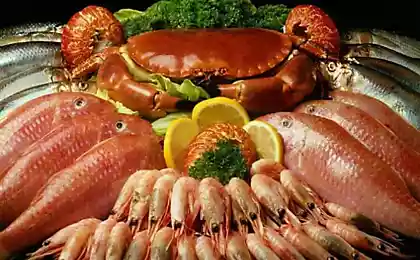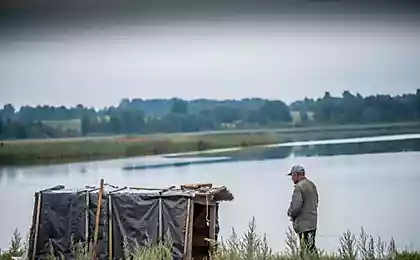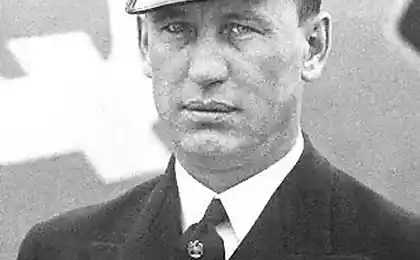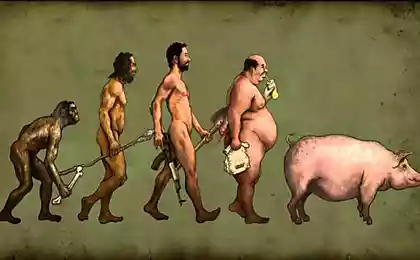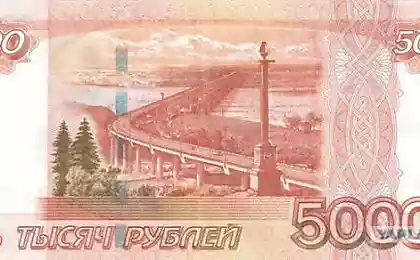525
The ocean emptied, no fish, no birds, almost no signs of life.
The ocean was dead, No fish. No birds. Only piles of debris were accompanied by yachtsman Ivan Macfadyen on the way from Melbourne to San Francisco. Silence distinguishes this trip from all previous ones. However, some of the sounds still could be heard. The wind still filled the sails and howled in the rigging. Waves also were splashing on the fiberglass hull. Heard other noises: muffled thumping and creaking from the shock of the hull on the wreckage debris. Only thing missing was the cries of sea birds accompanying the boat in the previous travel. There were not birds, because there was no fish.
Exactly 10 years ago, Newcastle yachtsman Ivan Macfadyen was the same course from Melbourne to Osaka. Then, for a successful catch was enough to throw the bait bait.
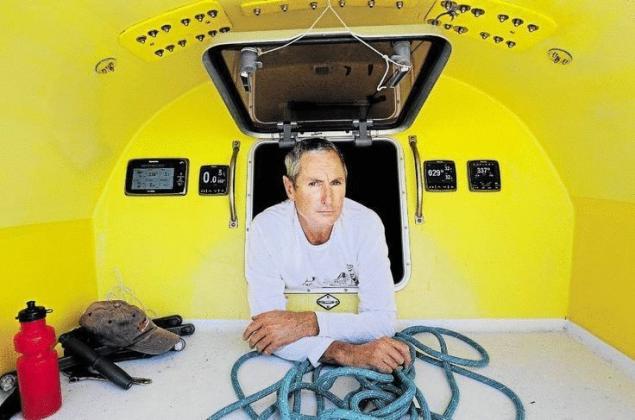
Ivan Macfadyen "During the 28 days of sailing in less than a day so we didn't catch a good fish, which they then cook with rice for dinner," recalls Macfadyen. At the same time for all long trip, the catch was limited to only two fishes.
No fish. No birds. Almost no signs of life.
"Over the years I got used to the birds, their cries, he admits. They were usually accompanied by a boat, sometimes sitting on the mast before leaping into the sky. Flocks circling in the distance above the surface of the sea and hunting for sardines, was the daily show."
However, in March and April of this year, his boat, Funnel Web, I was surrounded by only silence and desolation that reigned over a ghostly ocean.
To the North of the equator, up above New Guinea, the mariners saw in the distance a large fishing boat, oribase reefs. "All day it scurried with the trawl here and there. The ship was big, like a floating base," says Ivan. And at night, in the spotlight, the ship continued its work. In the morning Macfadyen hurriedly woke up my partner, telling that the ship had launched a speedboat.
"No wonder I was concerned. We had no weapons, and the pirates in those waters is quite common. I knew that if those guys are armed, we are lost, — he remembers.— But they were not pirates, at least in the conventional view. The boat moored, and Melanesian fishermen gave us fruit, jams and preserves. They shared five full fish bags from-under sugar. The fish was good, big, of different types. The part was fresh, and apparently had lain in the sun for some time. We explained to them that all of us can eat. We only had two, and storage space was a little bit".
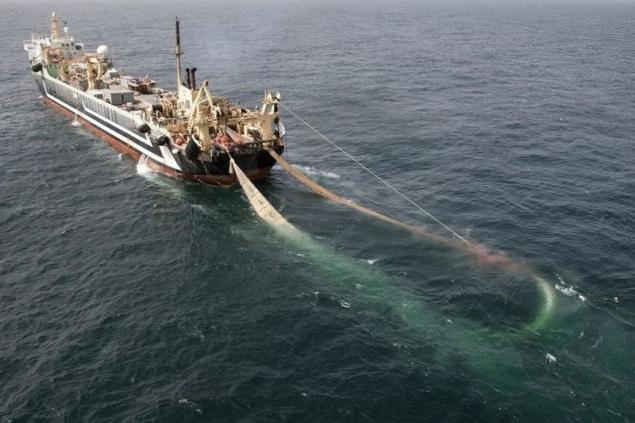
Dutch supertrawler FV Margiris at work, They shrugged their shoulders and offered to throw the fish overboard, saying he still would've done the same thing. They explained that it was only a small part of the daily by-catch. All they wanted was tuna, and the rest no that was not good enough. A fish killed and discarded.
They marched with the trawl the whole reef from morning to night, destroying all life on the way.
Macfadyen felt in his heart something snapped. The ship was only one of countless others hiding behind the horizon, and do similar work. No wonder the sea was dead. No wonder the fishing rod with the bait remained without a catch. Had nothing to catch. If this seems depressing, then it gets worse.
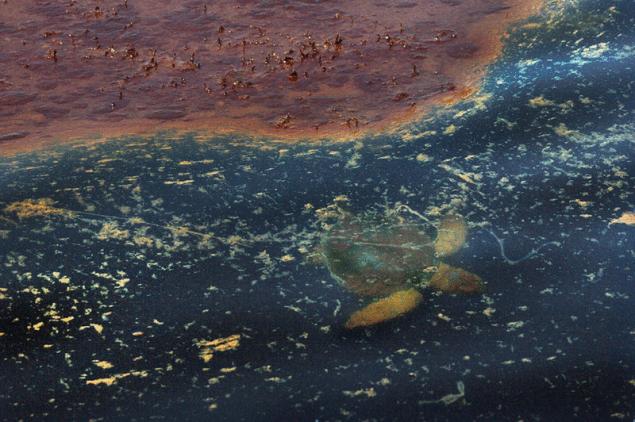
A sea turtle swims by oil-contaminated Sargasso algae after the explosion and leak at the Deepwater Horizon Following the travel route ran from Osaka to San Francisco. Almost throughout the voyage to the devastation of the added disgusting feeling of horror and fear: "When we left Japan, I had the impression, as if the ocean itself was devoid of life.
We hardly saw anything alive. We met Keith, who seemed helplessly swirled on the surface of the water, on his head was something that resembled a large tumor.
Quite a disgusting sight. My whole life I have izborsky miles and miles of ocean space. I used to meet turtles, dolphins, sharks and large flocks of vain hunting birds. This time, for 3000 nautical miles, I did not see and sign of life".
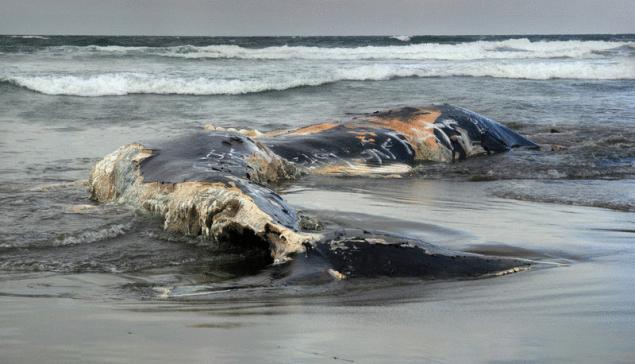
Dead beached whale ocean beach in San Francisco. Where once was life, now floated frightening piles of debris. Some of them — the effects of the tsunami that struck Japan a couple of years ago. Wave swept over the coast, picked up a pile just incredible and carried back into the sea. Wherever you look, all this rubbish would still be there.
Glenn, brother of Ivan, came on Board in Hawaii to go to the United States. It shocked the "countless thousands" of yellow plastic buoys, giant spider webs made of synthetic rope, fishing line and nets.
Millions of pieces of polypedatidae. Solid oil and petrol film.Countless hundreds of wooden electric posts, uprooted deadly wave and dragging your wire in the middle of the sea.
"In the old days in calm weather you just start the engine, — says Ivan, — but not now. In many places we couldn't start the engine for fear that it is a tangle of ropes and wires are wound on the screw. Unprecedented situation for the open sea. And if we dared to start the engine, it is not exactly night and only in the daytime, watching the debris from the bow of the ship.
To the North of the Hawaiian Islands from the bow of the ship was clearly visible through the water. I saw that debris was not only on the surface but in the depths of the ocean. Various sizes: from plastic bottles to debris the size of a large car or truck. We saw a factory chimney rising above the water surface. Beneath the water it was attached something like a boiler. We saw something similar to a container bobbing on the waves. We maneuvered among the debris. Like swimming in a landfill. Below deck was constantly heard, as the body ran across the debris, and we were constantly afraid to come on something really big. Already the body was covered in dents and scratches from fragments and debris, which we never saw."
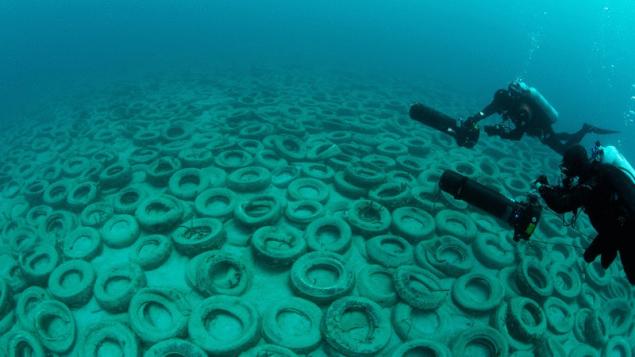
Reef Osborne 2 kilometers from Fort Lauderdale in Florida: 2 million tires were dumped there in the 1970s, during a failed ecological operation to create an artificial reef. Plastic was everywhere. Bottles, bags, various household debris that you can imagine, from broken chairs to trash scoops, toys and kitchen utensils.
There was something else. The bright yellow color of the ship, for all these years has not faded from either the sun or sea water, are reacted with something in Japanese waters, a strange and unprecedented way losing its luster.
Back in Newcastle, Ivan Macfadyen still trying to process everything and recover from the shock of the. "The ocean is devastated," he says, shaking his head, hardly believing it himself.
Realizing the extent of the problem and the fact that no organization, no government seems to have no interest in solving it, Macfadyen looking for a way out. He plans to influence government Ministers, hoping for their help.
First and foremost, he wants to appeal to the leadership of the Australian Maritime organization in an attempt to attract yacht owners to the international volunteer movement and, thus, to control debris and to monitor marine flora and fauna.
Macfadyen joined this movement while he was in the United States, in response to the request of American scientists, which, in turn, asked boat owners to conduct a daily report and collect samples for samples for radiation, which became a serious problem caused by the tsunami and subsequent accident at the nuclear power station in Japan.
Macfadyen contacted scientists with the question: why not require to send the fleet for garbage collection?
But they said that according to estimates, the damage caused to the environment from fuel combustion in this type of cleaning is too big.
Easier to leave all the garbage in the same place.

The Village Of Wakuya, Japan. The effects of a 9-magnitude earthquake and ensuing tsunami. published
The author — Max Mason-Hubers
The author of the text — Greg Ray
P. S. And remember, only by changing their consumption — together we change the world! ©
Source: itboat.com/articles/850-okean-umer
Exactly 10 years ago, Newcastle yachtsman Ivan Macfadyen was the same course from Melbourne to Osaka. Then, for a successful catch was enough to throw the bait bait.

Ivan Macfadyen "During the 28 days of sailing in less than a day so we didn't catch a good fish, which they then cook with rice for dinner," recalls Macfadyen. At the same time for all long trip, the catch was limited to only two fishes.
No fish. No birds. Almost no signs of life.
"Over the years I got used to the birds, their cries, he admits. They were usually accompanied by a boat, sometimes sitting on the mast before leaping into the sky. Flocks circling in the distance above the surface of the sea and hunting for sardines, was the daily show."
However, in March and April of this year, his boat, Funnel Web, I was surrounded by only silence and desolation that reigned over a ghostly ocean.
To the North of the equator, up above New Guinea, the mariners saw in the distance a large fishing boat, oribase reefs. "All day it scurried with the trawl here and there. The ship was big, like a floating base," says Ivan. And at night, in the spotlight, the ship continued its work. In the morning Macfadyen hurriedly woke up my partner, telling that the ship had launched a speedboat.
"No wonder I was concerned. We had no weapons, and the pirates in those waters is quite common. I knew that if those guys are armed, we are lost, — he remembers.— But they were not pirates, at least in the conventional view. The boat moored, and Melanesian fishermen gave us fruit, jams and preserves. They shared five full fish bags from-under sugar. The fish was good, big, of different types. The part was fresh, and apparently had lain in the sun for some time. We explained to them that all of us can eat. We only had two, and storage space was a little bit".

Dutch supertrawler FV Margiris at work, They shrugged their shoulders and offered to throw the fish overboard, saying he still would've done the same thing. They explained that it was only a small part of the daily by-catch. All they wanted was tuna, and the rest no that was not good enough. A fish killed and discarded.
They marched with the trawl the whole reef from morning to night, destroying all life on the way.
Macfadyen felt in his heart something snapped. The ship was only one of countless others hiding behind the horizon, and do similar work. No wonder the sea was dead. No wonder the fishing rod with the bait remained without a catch. Had nothing to catch. If this seems depressing, then it gets worse.

A sea turtle swims by oil-contaminated Sargasso algae after the explosion and leak at the Deepwater Horizon Following the travel route ran from Osaka to San Francisco. Almost throughout the voyage to the devastation of the added disgusting feeling of horror and fear: "When we left Japan, I had the impression, as if the ocean itself was devoid of life.
We hardly saw anything alive. We met Keith, who seemed helplessly swirled on the surface of the water, on his head was something that resembled a large tumor.
Quite a disgusting sight. My whole life I have izborsky miles and miles of ocean space. I used to meet turtles, dolphins, sharks and large flocks of vain hunting birds. This time, for 3000 nautical miles, I did not see and sign of life".

Dead beached whale ocean beach in San Francisco. Where once was life, now floated frightening piles of debris. Some of them — the effects of the tsunami that struck Japan a couple of years ago. Wave swept over the coast, picked up a pile just incredible and carried back into the sea. Wherever you look, all this rubbish would still be there.
Glenn, brother of Ivan, came on Board in Hawaii to go to the United States. It shocked the "countless thousands" of yellow plastic buoys, giant spider webs made of synthetic rope, fishing line and nets.
Millions of pieces of polypedatidae. Solid oil and petrol film.Countless hundreds of wooden electric posts, uprooted deadly wave and dragging your wire in the middle of the sea.
"In the old days in calm weather you just start the engine, — says Ivan, — but not now. In many places we couldn't start the engine for fear that it is a tangle of ropes and wires are wound on the screw. Unprecedented situation for the open sea. And if we dared to start the engine, it is not exactly night and only in the daytime, watching the debris from the bow of the ship.
To the North of the Hawaiian Islands from the bow of the ship was clearly visible through the water. I saw that debris was not only on the surface but in the depths of the ocean. Various sizes: from plastic bottles to debris the size of a large car or truck. We saw a factory chimney rising above the water surface. Beneath the water it was attached something like a boiler. We saw something similar to a container bobbing on the waves. We maneuvered among the debris. Like swimming in a landfill. Below deck was constantly heard, as the body ran across the debris, and we were constantly afraid to come on something really big. Already the body was covered in dents and scratches from fragments and debris, which we never saw."

Reef Osborne 2 kilometers from Fort Lauderdale in Florida: 2 million tires were dumped there in the 1970s, during a failed ecological operation to create an artificial reef. Plastic was everywhere. Bottles, bags, various household debris that you can imagine, from broken chairs to trash scoops, toys and kitchen utensils.
There was something else. The bright yellow color of the ship, for all these years has not faded from either the sun or sea water, are reacted with something in Japanese waters, a strange and unprecedented way losing its luster.
Back in Newcastle, Ivan Macfadyen still trying to process everything and recover from the shock of the. "The ocean is devastated," he says, shaking his head, hardly believing it himself.
Realizing the extent of the problem and the fact that no organization, no government seems to have no interest in solving it, Macfadyen looking for a way out. He plans to influence government Ministers, hoping for their help.
First and foremost, he wants to appeal to the leadership of the Australian Maritime organization in an attempt to attract yacht owners to the international volunteer movement and, thus, to control debris and to monitor marine flora and fauna.
Macfadyen joined this movement while he was in the United States, in response to the request of American scientists, which, in turn, asked boat owners to conduct a daily report and collect samples for samples for radiation, which became a serious problem caused by the tsunami and subsequent accident at the nuclear power station in Japan.
Macfadyen contacted scientists with the question: why not require to send the fleet for garbage collection?
But they said that according to estimates, the damage caused to the environment from fuel combustion in this type of cleaning is too big.
Easier to leave all the garbage in the same place.

The Village Of Wakuya, Japan. The effects of a 9-magnitude earthquake and ensuing tsunami. published
The author — Max Mason-Hubers
The author of the text — Greg Ray
P. S. And remember, only by changing their consumption — together we change the world! ©
Source: itboat.com/articles/850-okean-umer
Review: Robot vacuum cleaners - how to choose? Tested on humans
Weather dependent: causes and consequences







